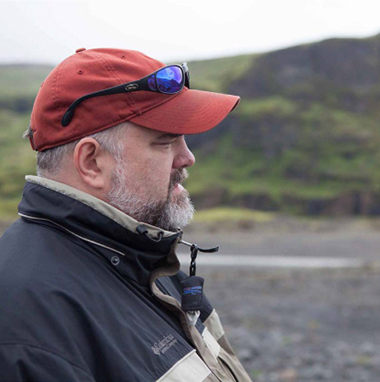Interview with a Compressionist

Name: Doug Daulton
Location: Spokane, Washington
Title/role: Filmmaker and Technical Director
Company: Verge Pictures
How did you get started in video compression or video streaming?
Originally, I come from the web design world. We dabbled in Flash and Sorensen Squeeze, but nothing big. When I got serious about making films, I did an internship with Pixel Corps in San Francisco. That was my first real exposure to compression and streaming.
Because I came from technical project management, I took to it quickly and was soon hired to help build out their streaming infrastructure, which was an early-stage business line at the time. Now, it is a core business for them, and they are widely considered the best at what they do.
What role does compression/streaming play in your daily work?
Now working primarily as an independent filmmaker, compression mostly comes into play when I am generating dailies or reference footage for our production team or corporate clients. Because our production teams are distributed around the globe, I am always looking for the best combination of image quality and file size I can get.
Streaming is an interesting beast for me. I’ve worked on several web docuseries where we capture interview footage over one or more of the various streaming services, mostly Skype. So far, because the deliverable is intended for YouTube, this has worked out pretty well.
In both cases, my time in the trenches doing high-profile corporate streams with Pixel Corps has been invaluable.
What surprises you most about video compression today?
I am constantly amazed that the industry has not come together around a common, open source, scalable codec. I fully understand the business rationale for not doing so, but I think it is short sighted and slows the pace of innovation in the space.
Google has done a lot of heavy lifting with VP9. I wish everyone, from camera manufacturers to distributors, would lock themselves in a room for a year, contribute the best features of each codec, and build one world-class codec that scales from kids goofing around on their phones to DCPs for major studio releases in IMAX.
It might be a pipe dream, but, like Elon Musk giving away the patent for the Tesla charging station, I think it would enable a lot of innovation currently locked in cross-format conversions.
For example, a common codec would accelerate the adoption of cloud-based rendering by allowing vendors to optimize media transfer and render stacks. For low-budget productions, it might even enable a distributed render farm along the lines of the Folding@Home project for disease research.
How has video compression changed in the time you’ve been working with it?
There are faster and more efficient transcodes and smaller footprint files and streams. Wishes for a “unicorn codec” aside, in my ten years in the space, it has been amazing to see how far we’ve come. What used to take a production truck can now be done, for certain use cases, with a phone and a couple of key pieces of gear, all of which fit in a backpack.
What’s the one thing you wished you had known about video compression when you were starting out?
I wish I had known how fast the deliverable environment would change. When I started, 1080p capture, 720 renders, and SD streams were cutting edge. Now, the minimum is 4K capture, 2K renders, and 1080p streams. With consumer AR/VR/MR right around the corner, the current standards will likely seem quaint within five years.
Had I understood how quickly the landscape would change, I would have been a bit less rigid early on.
What’s the next big thing we should be watching in the world of video compression?
The obvious answer is compression for AR/VR/MR. Headsets like the Oculus Rift are just the tip of the iceberg. As the screen moves closer to or, eventually, in the human eye, the need for image fidelity will greatly increase. Couple that with delivery in real time, and the need for better, faster compression algorithms is self-evident.
Like most, I am fascinated by AR/VR/MR and am currently working on a project involving it. But, what I am most excited for is how advances in that space will reduce the real costs (e.g., dollars, time, accessibility) for producers of “traditional” 16:9, fixed-frame media. The compression advances that enable virtual reality will eventually reduce, if not eliminate, the need to travel to capture inexpensive, high-quality real-time interviews with subjects from across the globe. As a producer with young kids and a desire to be closer to my family, I find that really exciting. In theory, it allows me to have it all.
